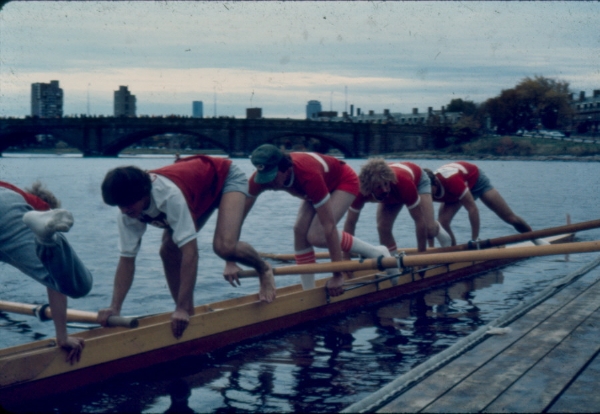Projects
"Rowing? In Nebraska?" The UNL Crew Club: 1969-1980Project Editor: Joshua Vapenik, History 470: Digital History, Spring 2008 Table of Contents
Equipment
|
Equipment
The second obstacle the fledgling team would have to overcome was the need for rowing equipment. Rowing is an expensive sport, and even in the 70s a new racing shell cost around five thousand to seven thousand dollars, and a set of eight oars ran about eight hundred dollars. Since at the time they received no funding from the university, the only option was to seek out old or damaged equipment that other teams would otherwise discard. In order to find and acquire this equipment, the team embarked on a letter writing campaign to schools across the US asking for old and even broken equipment. With the generosity of several East Coast and Midwestern Universities, soon the team had the boats and oars they needed to begin rowing.
Additionally, some craft for the coach to ride alongside the shell in and observe and coach from was also needed. The Sears Roebuck company donated a 14 foot boat and a ten horsepower engine to the team for this purpose . When the shell started to pull away from the launch, a second, 18 foot boat and a 55 horsepower motor were donated by Martin's Countryside Marina of Lincoln .

| The openweight men's four pushes off from the dock as they launch for practice prior to the Head of the Charles. Here is visible the wooden makeup of the shell and oars. Wood was the primary material for shell construction before the introduction of lighter fiberglass and later, carbon fiber composites. The oars used would also have been "spoons" as opposed to the "hatchets" used today.
|
|

